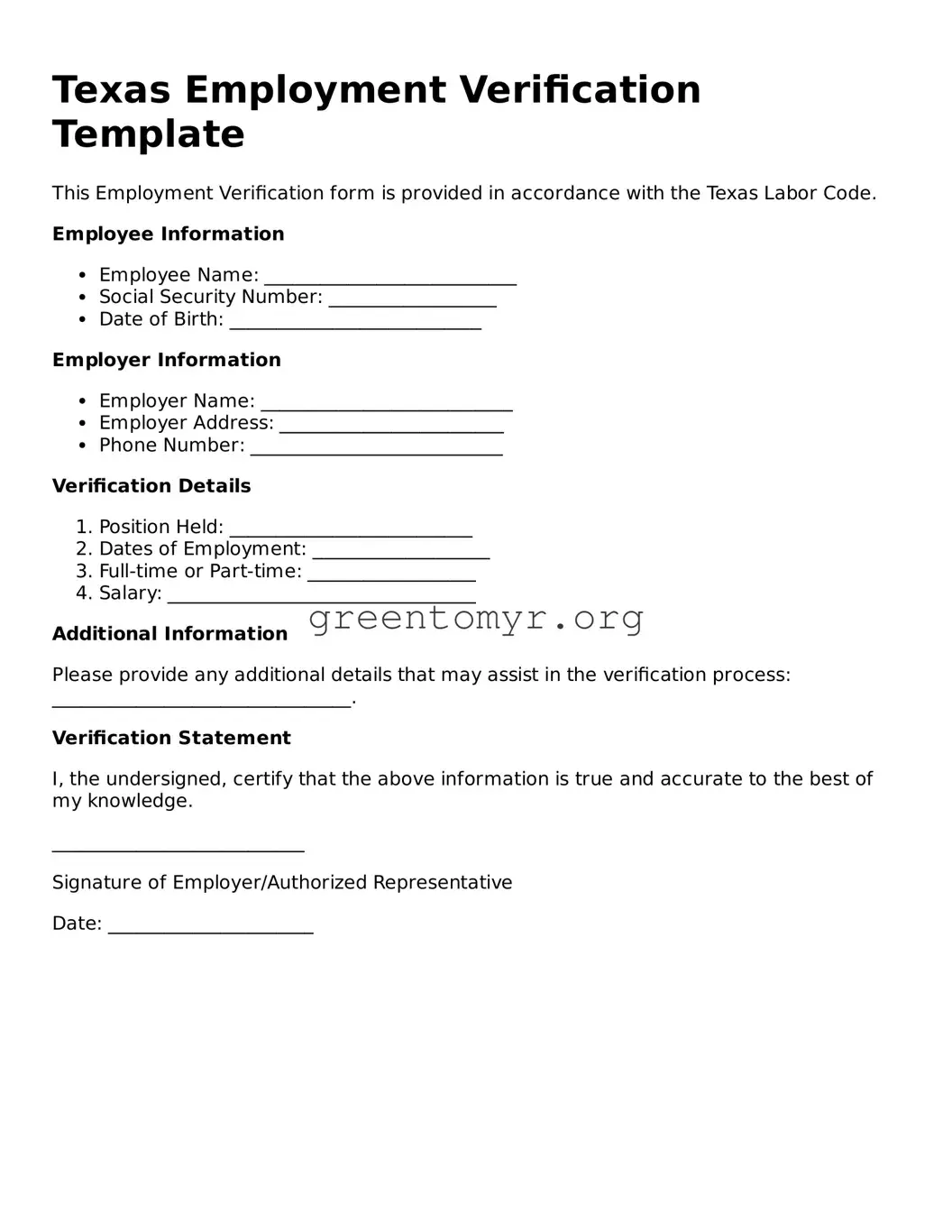The Texas Employment Verification form is a document used to confirm an employee’s job status and details with their current or former employer. This form can be requested by prospective employers, government agencies, or other institutions for a variety of purposes, including loan applications or background checks.
The employer typically completes the Texas Employment Verification form. However, the employee may need to provide the necessary information, such as their employment dates and position, to ensure accurate completion.
How can I request an employment verification from my employer?
To request employment verification, employees should:
-
Contact their Human Resources department or direct supervisor.
-
Provide the necessary details to facilitate the verification process, such as the recipient's information and the specific details requested.
-
Submit the request in writing, if required by company policy.
Generally, employers do not charge a fee for processing employment verification requests. However, this can vary by company policy or if the request is complicated, such as requiring extensive research.
The form typically includes essential details such as the employee's name, job title, employment dates, salary information, and sometimes details regarding performance or eligibility for rehire. However, the specific contents may differ by employer and the context of the request.
Employers must adhere to privacy laws and protect employee information. Consent from the employee is often required before disclosing sensitive information. Additionally, inaccuracies in the form can lead to legal repercussions, so it’s vital to ensure that all information presented is correct.
How long does it typically take to receive employment verification?
The time frame for completing employment verification can vary. Most employers aim to respond within 2 to 5 business days. However, it may take longer if the request is complex or if the appropriate personnel are unavailable.
If a former employer refuses to provide verification, individuals may have several options:
-
Contact HR to understand the reason for the refusal and explore alternatives.
-
Gather other supporting documents, such as pay stubs or tax forms, to establish employment history.
-
Seek legal advice if the refusal seems unjustified or discriminatory.
Can employment verification affect my job offer?
Yes, employment verification can significantly impact a job offer. If discrepancies arise between the information provided on a job application and what the employer verifies, it may lead to the withdrawal of the offer. Therefore, it’s essential to provide accurate and truthful information during the application process.
